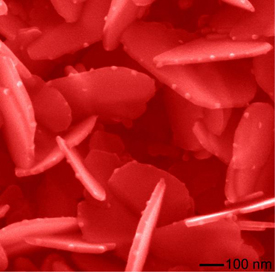Portable X-Ray Source Invented at MU Could Put Medical Diagnosis and Terrorism Prevention in the Palm of the Hand
The inexpensive device could improve health in the developing world and reduce mining risks
COLUMBIA, Mo. — The hand-held scanners, or tricorders, of the Star Trek movies and television series are one step closer to reality now that a University of Missouri engineering team has invented a compact source of X-rays and other forms of radiation. The radiation source, which is the size of a stick of gum, could be used to create inexpensive and portable X-ray scanners for use by doctors, as well as to fight terrorism and aid exploration on this planet and others.
“Currently, X-ray machines are huge and require tremendous amounts of electricity,” said Scott Kovaleski, associate professor of electrical and computer engineering at MU. “In approximately three years, we could have a prototype hand-held X-ray scanner using our invention. The cell-phone-sized device could improve medical services in remote and impoverished regions and reduce health care expenses everywhere.” (more…)


